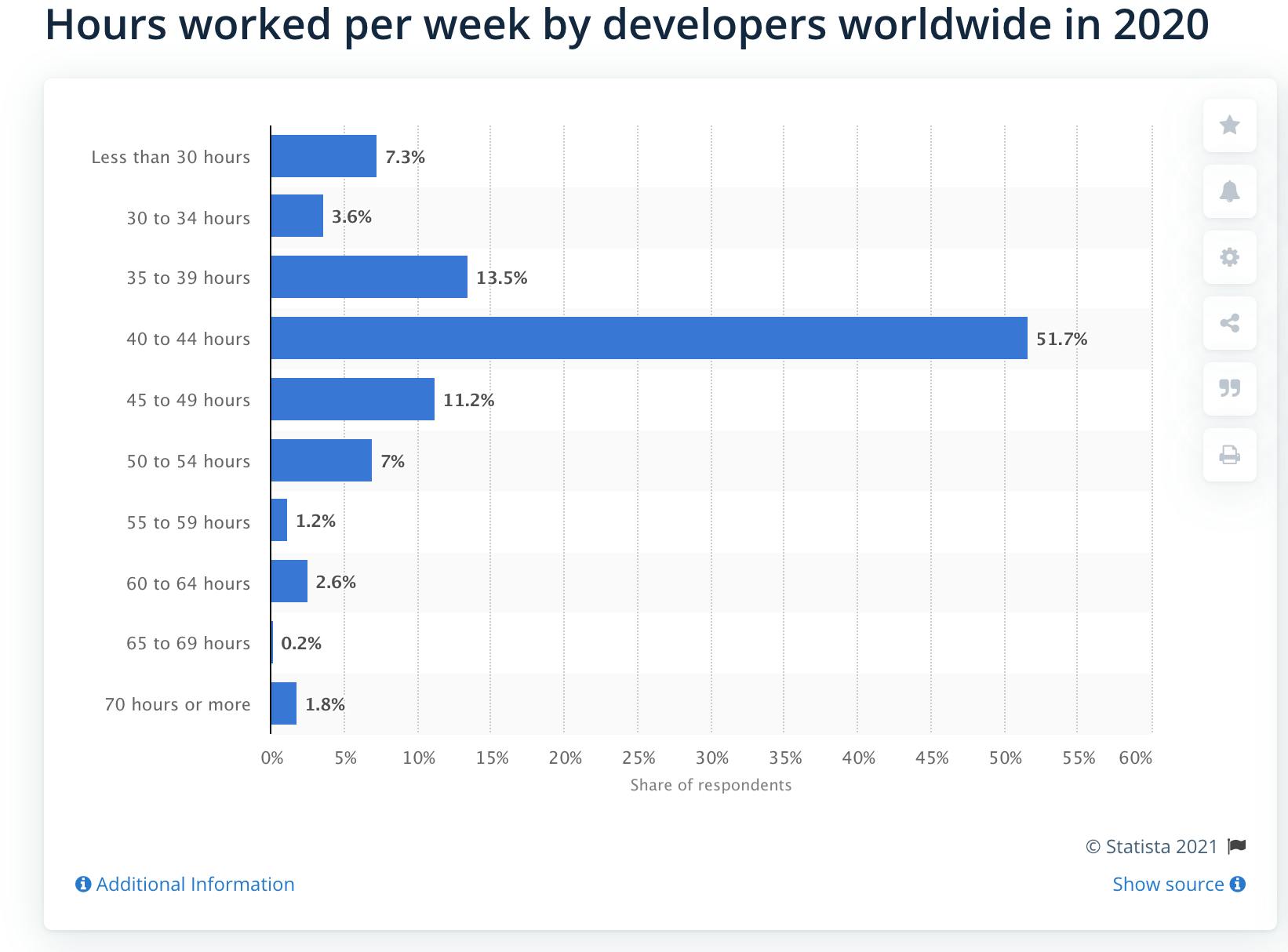A recent report by MIT Sloan Management Review found that over 90% of workers believe they must update their skills annually, just to keep up with the technology space. But, with many employees working remotely, it’s increasingly complicated for them to find the motivation.
And, while some employees may choose—or not—to pursue professional development tracks while working remotely, there is some training that all employees must follow: onboarding. Especially when so many people are joining new jobs remotely, a robust onboarding process is essential to retaining, orienting, and motivating new hires.
In this post, we’ll go over a few tips for how to make sure the training you manage for developers sticks, from onboarding through to professional development—especially if it’s remote.
1. Set SMART goals
Nothing is more frustrating for developers than feeling that they’re on a hamster wheel, running to attain impossible goals and getting nowhere. On the job, as in one’s personal life, it’s all about working towards reasonable goals that leads to feelings of fulfillment.
In fact, a recent study revealed that just setting attainable goals—regardless of whether you fulfill them—has a positive effect on someone’s overall happiness. In other words, “[...] it’s the feeling of control over one’s life — which derives from how attainable they feel goals are — that generates these positive feelings.”
One simple way for employers to ensure their teams feel in control is to set SMART goals. The ‘SMART’ acronym can be interpreted a few ways, and generally stands for:
- Specific (simple, sensible, significant)
- Measurable (meaningful, motivating)
- Achievable (agreed, attainable)
- Relevant (reasonable, realistic and resourced, results-based)
- Time-bound (time-based, time-limited, time/cost-limited, timely, time-sensitive)
Here are two good examples of SMART goals for developers:
- Design and a build system to prevent revenue loss of $5M on an annual basis.
- Streamline user invoicing process by 15 - 20% through constructing 2 major pages (from UI to backend) that merge the rates and bills procedures with Java, Spring, and DB2.
SMART goal-setting is often built into an OKR (Objectives and Key Results) framework at the company-wide level, to make sure each employee understands how their individual work fits into the bigger picture. This is especially important when your teams are distributed or working remotely or offshore.
Overall, setting SMART goals will keep your developers engaged at the personal level, and also motivated to learn more through training, in order to help the entire company achieve their aims.
Related: Our 3-Step Process for Using OKRs to Drive Performance (+ Free OKR Template)
2. Build training into incentives
Talented tech specialists will expect a competitive salary aligned with the market. Although money isn’t everything (as we’ll see below), researchers at The Open University (UK) did find that developers consider ‘financial factors’ as frequent motivators at work. Ensuring your team has a competitive salary and benefits package is table stakes.
However, be careful about using bonuses or financial incentives as the only motivating factor. As Tatum Hunter pointed out in Builtin, monetary bonuses, if used unwisely, can lead to more harm than good. That’s because they can compromise agility, pigeon-hold developers, and breed misunderstandings.
Instead, he argues that building up intrinsic motivators like mastery, autonomy, and purpose work a lot better. Training managers on how to cultivate this type of motivation is a non-negotiable if you want to pursue this approach.
So is investing in continuous learning: “help employees build mastery by offering ongoing training opportunities in areas that will help them do their jobs better — or even in areas that would help them do other people’s jobs better.”
Aside from base salary, you can include appreciated incentives or fringe benefits like:
- Flexible working hours
- Opportunities to visit tech courses and conferences (reimbursed)
- Unstructured time to pursue non-essential projects
- Continuous learning opportunities
- Bonuses, or some other form of additional compensation
Help employees build mastery by offering ongoing training opportunities in areas that will help them do their jobs better — or even in areas that would help them do other people’s jobs better.
3. Respect work-life balance
Insist on a healthy work-life balance for your developers. Overworking can lead to demotivation, burnout, or simply pushing your employees to look for work elsewhere. It also won’t leave them with any free headspace to invest in learning. Do everything you can to make your teams’ workweek a reasonable length, and only insist on overtime if it’s truly urgent.
When they do need to put in the extra hours, find ways to thank them—financially and otherwise—to show you don’t take them for granted.
4. Provide relevant training programs
Comprehensive training programs are vital to bring the best out of your remote software engineers and further enhance their creative potential. Most trainers face tremendous challenges while managing distributed teams of developers. However, they can transform this challenge into an opportunity—as we saw above, learning opportunities are strong motivators for problem-solving types like software engineers.
Here are some ideas to help your remote development team stay efficient and encourage upskilling and professional development:
Work from home courses
Working remotely has many advantages, but it’s not entirely rosy for all. According to Avast Business’s Mobile Workforce Report, 46% of remote workers said that frequent distractions affect their work and productivity, and 41% also agreed that they sometimes procrastinate.
What can you do to help? Organize some courses for your employees to help with productivity when working from home. Create a list of tools that your team should use daily to communicate and organize their workflow effectively. Give them some tips on procrastination and on preparing a workplace at home.
Tech giants like Google and bootstrapping start-ups alike have started paying for their employees’ home workspaces through allowances covering furniture, electricity, internet, and other related costs.
Remote onboarding
It is more challenging to communicate with new team members remotely and make them feel comfortable initially. You have to create a complete roadmap to help newcomers settle in to your team.
Prepare comprehensive guides for them on all the processes they have to learn initially, explain to them how to communicate with other team members.
Related: 6 Steps to a Great Remote Onboarding Process - and What to Avoid
Soft skills training
You can be a top-performing engineer with years of tech experience, but still struggle with effective workplace communication. And that can really get in the way of team collaboration and performance. When working from home, it becomes even more difficult for some developers to organize their communication and collaboration with teammates.
Some companies are starting to rely on VR solutions to enhance various soft skills. For example, H&R Block is using VR simulations for customer service training. VR can provide an ideal environment to practice high-stakes conversations.
Related: 7 Types Of Employee Training, and When to Implement Each
Tech skills training
Developers naturally need to continuously stay up to date with the latest tech developments and and improve technical skills. But it can become more difficult for them to follow all new courses and seminars. Think of creative ways to provide unique development and learning programs for your employees.
One great example is Airbnb. They regularly organize fireside chats and interactive sessions, where successful industry leaders talk about their journey and the ups and downs they have faced. It serves as a platform to educate Airbnb employees on various aspects of the business.
We can also look to the company Etsy. Etsy believes that people have something to learn from every individual. They have started a campaign called ‘Etsy School’, where all level employees conduct engaging classes to teach and learn from one another. These classes cover a vast range of topics—from “silk-screening to Python programming.”
Bottom line? Invest in your developers
It comes down to a simple takeaway: your company’s success depends on your developers’ performance. Proving relevant training is a crucial element, but you want to make sure your employees have fertile ground in which to grow. That means that their goals, incentives, and work-life balance are optimal.
When all of these elements come together, training and learning can really take root—whether your developers are all sitting in the same room or hundreds of miles away.
If you’re ready to take the next step in embedded learning throughout your organization, check out our ebook on how to embrace the Learning Organization model.





